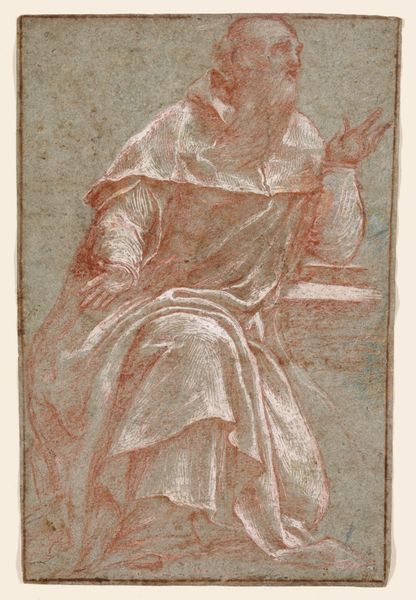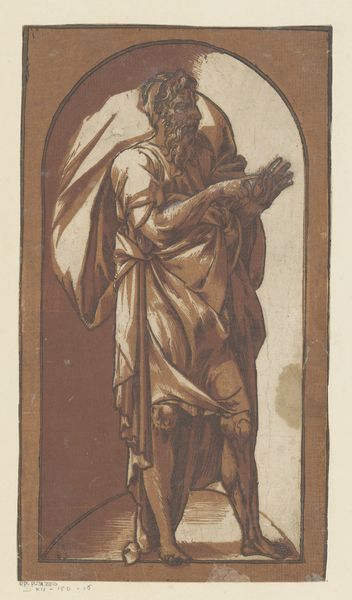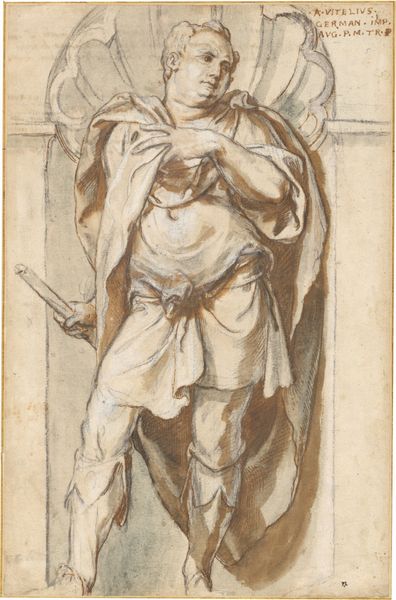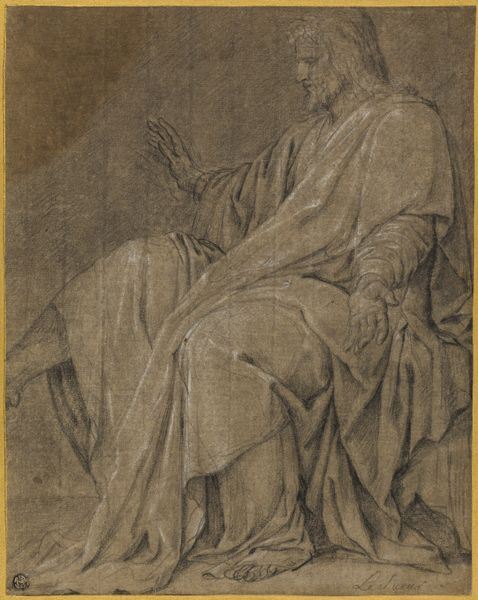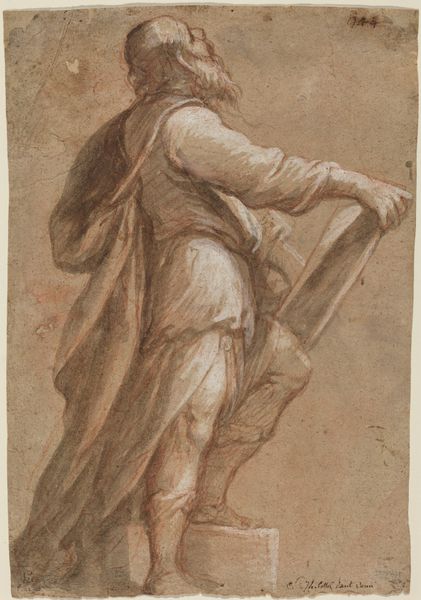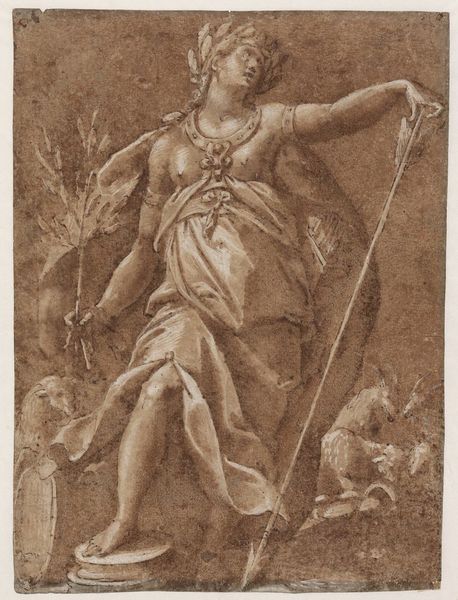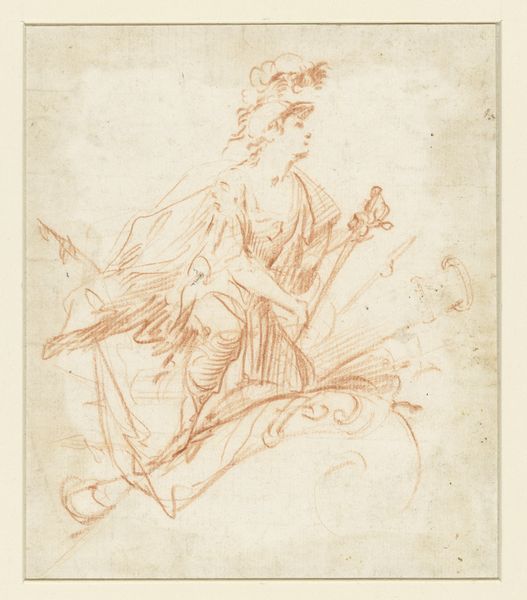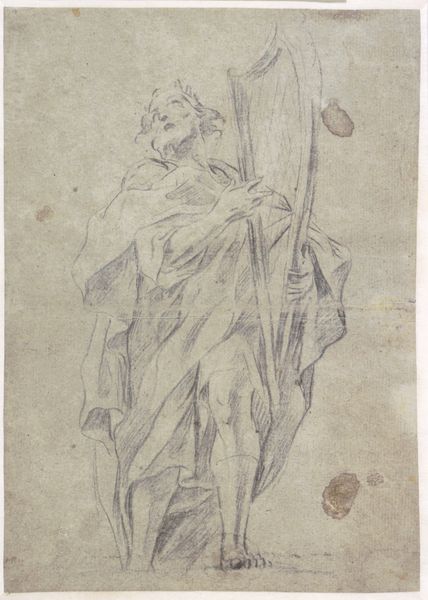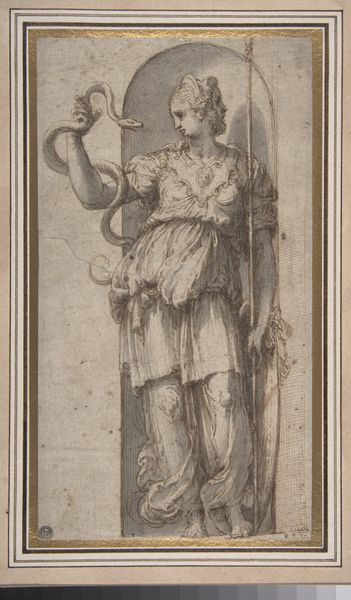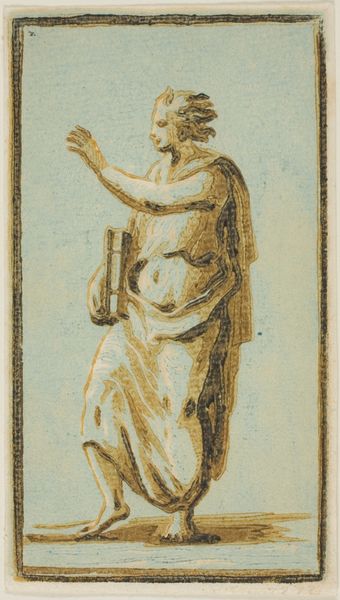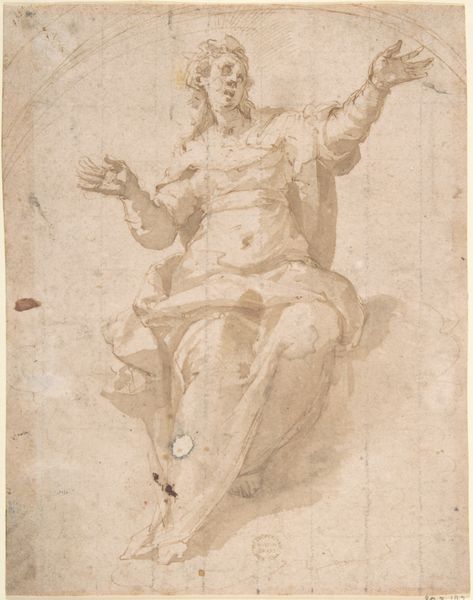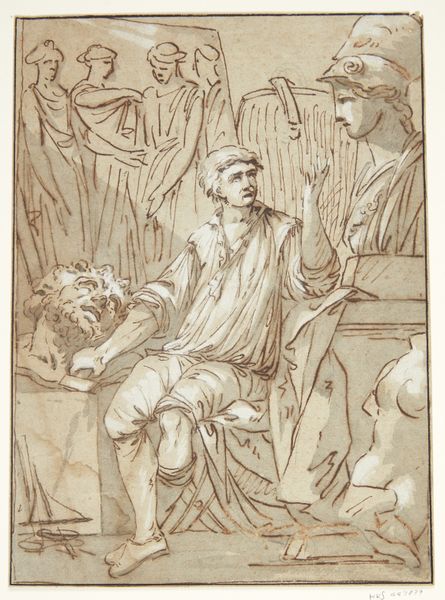
drawing, print, paper, ink, inorganic-material, chalk, black-chalk
#
drawing
#
toned paper
# print
#
pencil sketch
#
charcoal drawing
#
possibly oil pastel
#
paper
#
charcoal art
#
oil painting
#
ink
#
inorganic-material
#
coffee painting
#
underpainting
#
chalk
#
men
#
water
#
charcoal
#
italy
#
black-chalk
#
watercolor
Dimensions: 360 × 268 mm
Copyright: Public Domain
Editor: So, here we have Sigismondo Caula's "Saint Lawrence in Glory," created using chalk, black chalk, and ink on toned paper. It's a relatively small piece, but the upward gaze of the figure and the billowing clouds give a sense of grand ascension. What strikes you most about this drawing? Curator: The first thing that catches my eye is its public role as a depiction of religious iconography, clearly designed for contemplation or veneration, wouldn’t you say? Do you recognize the significance of the object to the right? Editor: I think that's Saint Lawrence's attribute, the grill, referring to his martyrdom. But how would a piece like this circulate at the time? Curator: That’s key, isn't it? Drawings like this weren't necessarily ends in themselves. Often, they served as preparatory sketches for larger works, such as altarpieces, frescos or even prints intended for wide distribution. The social impact really resided in these finished products, and a piece like this offers a rare glimpse behind the scenes, if you will. Editor: So, this drawing could have informed public devotion on a grand scale? I hadn’t considered that. Curator: Precisely. Caula may have used this to work out the composition, the figure's pose, the play of light and shadow, anticipating its final, more public form. How does that affect your appreciation of the work? Editor: I guess I see it as less of a finished artwork, and more like a tool, with the ultimate purpose being to inspire viewers and reaffirm their faith through altarpieces and prints. Fascinating to think of its political power as a devotional tool! Curator: And now, when we encounter this preliminary drawing in a museum setting, doesn't that also shape our understanding, our very modern relationship to religious imagery and artistic practice? Editor: It does, certainly transforming a behind-the-scenes process into a valuable artwork of its own. It’s amazing how context changes everything.
Comments
No comments
Be the first to comment and join the conversation on the ultimate creative platform.
